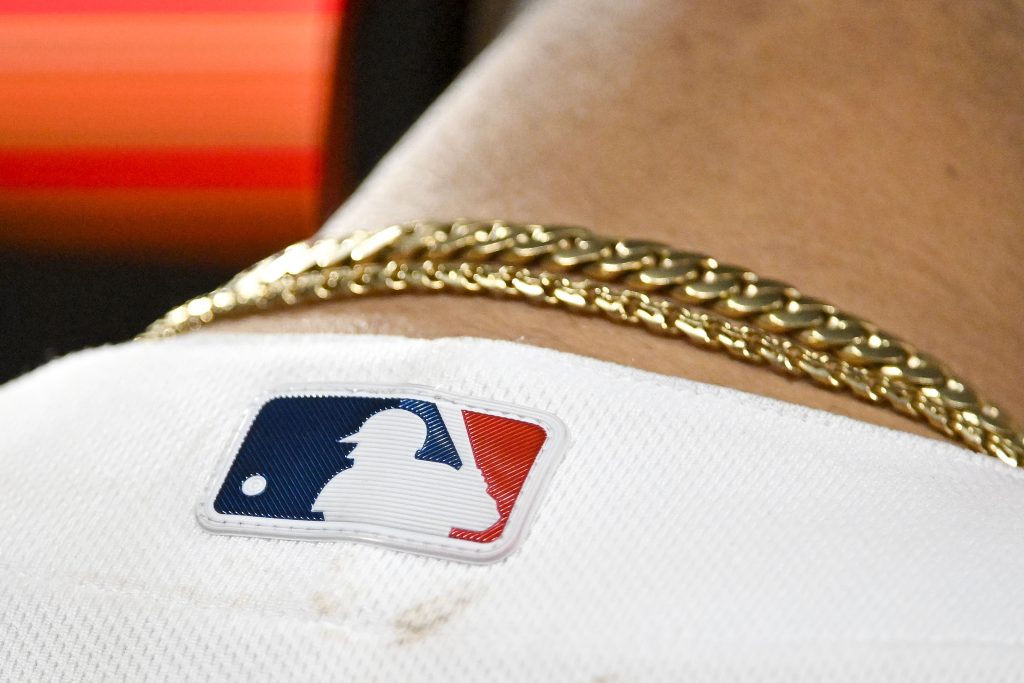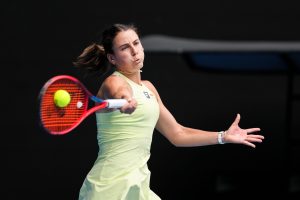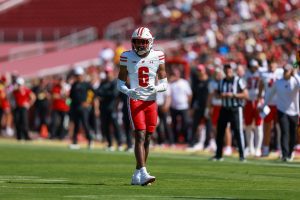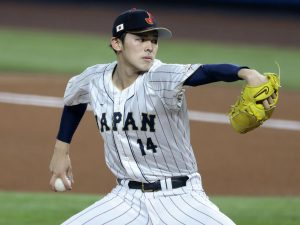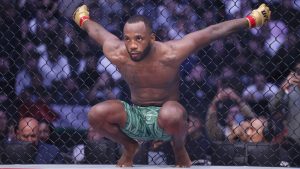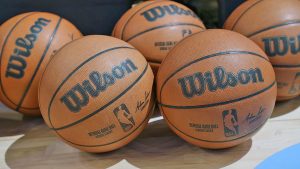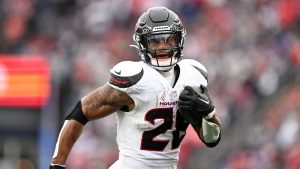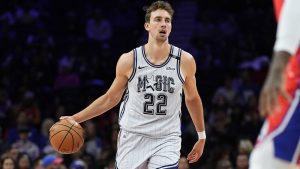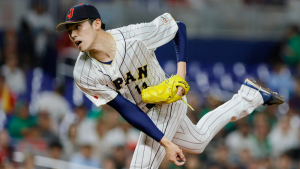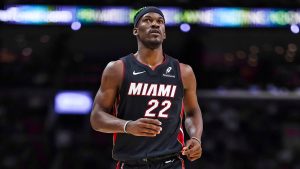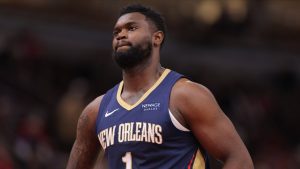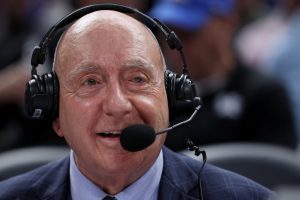No, Roki Sasaki hasn’t chosen a team yet, but these 5 players could also make a big impact on their future teams.
In the weeks leading up to the official opening on Wednesday, the 2025 international signing period was predominantly discussed in relation to the free agency of Japanese pitching phenom Roki Sasaki. But no matter where Sasaki signs, this is still a larger process and a part of the baseball calendar that will impact all 30 MLB clubs — not just the one fortunate enough to sign Sasaki — for years to come.
There are two primary avenues for MLB teams to add amateur talent to their organizations. There’s the draft in July, when clubs have 20 rounds to select the best high school and collegiate players from the United States and Canada. And there’s the international signing period, which opens Jan. 15, when teams can sign players from foreign countries who are at least 16 years old. Most of these players come from historic baseball hotbeds such as the Dominican Republic and Venezuela, but baseball continues to grow globally, with players from 14 different countries inking contracts already in 2025, including Nicaragua, Australia, Taiwan, Panama, Italy and Uganda.
While the signing period remains open all the way until Dec. 15, the vast majority of signings take place over the first few days, as many deals between players and clubs were verbally agreed to well in advance of the signing period officially opening. As such, many teams have already announced their 2025 international classes, with photos of their new players celebrating the earliest moments of their professional careers:
Welcome to Reds Country, fellas! 🇨🇴🇩🇴🇳🇮🇻🇪 pic.twitter.com/Aml3fsnjxY
— Cincinnati Reds (@Reds) January 15, 2025
Welcome to the Guardians organization!#ForTheLand pic.twitter.com/cCn4RoebDR
— GuardsInsider (@GuardsInsider) January 16, 2025
This is merely the beginning of these players’ long climb to the big leagues, but it’s a pivotal first step. With an arduous and unpredictable path in front of them, it’s difficult to know which of these young players will become household names someday. That said, here are five 2025 international signees who caught my attention and whose progress in pro ball will be worth keeping an eye on in the coming years.
SS Elian Peña, New York Mets
A little over a month after signing Juan Soto to the biggest contract in North American team sports history, the Mets again shopped at the top of the market by securing Peña with a $5M bonus, the largest of any 2025 signee. Unlike Soto’s, this deal is the result not of owner Steve Cohen’s deep pockets but, rather, of an intense organizational belief in Peña as the top player available in his class, which is reflected by the Mets’ willingness to devote nearly 80% of their available pool to Peña alone.
A physical lefty bat who currently plays shortstop but projects more as a third baseman, Peña’s offensive ability seized scouts’ attention years before he was eligible to receive such a sizable bonus. He has consistently demonstrated a rare combination of plate discipline and spectacular raw power for his age, as well as determination to improve the lesser parts of his game in an effort to become a more well-rounded player, rather than a one-dimensional slugger. But make no mistake: The Mets are buying a bat here. With the advanced ability and unrivaled bonus come sky-high expectations, and Peña will likely be under more pressure than the average top international signee to produce in the low minors right away.
Since Cohen took over as owner, he has repeatedly stressed his intention to build up the organization to the point that the team can be considered first-class in multiple aspects, beyond just having the league’s largest major-league payroll. Enhancing the farm system through trades, the draft and the international market has been a primary goal for Cohen and general manager David Stearns in recent years. It’s not always the largest financial outlays that yield the best results — shortstop Jesus Baez, currently one of New York’s top prospects, signed for just $275K out of the Dominican Republic in 2022 — but investing in players with Peña’s superstar ceiling undeniably exemplifies the Mets’ intention to excel at every level of the organization.
SS Josuar Gonzalez, San Francisco Giants
Beyond Peña, the most highly regarded non-Sasaki prospect in the 2025 class is Gonzalez, who received a signing bonus of nearly $3M from San Francisco. He might not possess quite the offensive ceiling of Peña, but Gonzalez brings a wider array of tools as an advanced switch-hitter with plus speed and a far greater likelihood of sticking at shortstop long-term. Outfielder Rayner Arias ($2.7M in 2023) and shortstop Marco Luciano ($2.6M in 2018) are two recent examples of San Francisco investing heavily in one Dominican position player at or near the top of their international class, with varying results in pro ball so far. Arias has shown flashes of his power potential but hasn’t played much yet due to injury, while Luciano shined at times in the minors but has looked overmatched so far in the big leagues. These two are among countless examples of high-dollar signees whose uneven trajectories serve as valuable reminders of just how far these players have to go to actualize into good big leaguers.
It’s also not always the players who receive the highest bonuses who end up becoming the best. Look no further than the guy the Giants just gave $182M to play shortstop: Willy Adames. Adames, also Dominican, signed with the Tigers for $420K in 2012 before being shipped to Tampa Bay in the David Price trade two years later. It took some time, but Adames eventually became one of baseball’s best shortstops and ultimately landed a massive contract as a free agent. Although he has yet to play a game as a Giant, Adames has already ingrained himself in the organization: He was on hand at the team’s academy in the Dominican Republic to celebrate the new signees, including Gonzalez.
Giants Shortstop 🤝 Future Giants Shortstop pic.twitter.com/DVXut1bk15
— dylan (@sfgsalsa) January 15, 2025
Perhaps one day Gonzalez will succeed Adames as San Francisco’s starting shortstop, but that’s a distant vision, of course. He has yet to play a professional game and doesn’t turn 18 until October. Still, in a relatively shallow Giants system beyond first baseman Bryce Eldridge, Gonzalez immediately becomes one of the organization’s most promising prospects. As with Peña, his pro debut will be highly anticipated.
RHP Raudy Reyes, Atlanta Braves
One of the more noticeable recent trends in the international market has been teams’ reluctance to hand out seven-figure signing bonuses to pitchers. Sasaki is, of course, an outlier in this context. While still not a finished product by major-league standards, at 23 years old and after multiple years of elite performance in the second-best league in the world, Sasaki comes with a degree of certainty that no pitcher signing at 16 or 17 years old could possibly offer. From both health and skill standpoints, it’s far more challenging to project how a teenage pitcher will develop than a teenage position player. In turn, most teams prefer to commit their largest bonuses to gifted hitters while taking their chances on developing promising and projectable pitchers for lower five- and six-figure bonuses.
Every few years, however, a pitcher with uncommon physical maturity and premium stuff separates himself atop an international class and warrants a significant bonus. Three years ago, the Padres gave Dominican right-hander Jarlin Susana $1.7M, more than double what any other pitcher in his class received. Just six months later, Susana was dealt to Washington as part of the Juan Soto trade. In 2024, he excelled in the low minors, and he now looks like one of the more exciting pitching prospects in baseball.
This year, Atlanta signed Reyes for $1.8M with the hope that he could chart a similar path. Like Susana, the hulking Reyes already has big-league physicality, elite velocity and a sharp slider. His shoddy command will need serious refinement as he enters pro ball, but it’s easy to dream big on a pitcher with his arm talent. Along with switch-hitting Cuban outfielder Diego Tornes, who signed with Atlanta for $2.5M, the Braves boast one of the more tantalizing top tiers of any 2025 signing class.
Atlanta Braves sign Dominican RHP Raudy Reyes.
Fastball up to 101 mph.
More scouting reports on the Braves 2025 class: https://t.co/nq7nC9Sa7L pic.twitter.com/2rhecOImFD
— Ben Badler (@BenBadler) January 15, 2025
SS/RHP Shotari Morii, Athletics
For years, it was exceptionally rare for star Japanese high school players to bypass NPB in favor of coming stateside. Although ultra-talented prospects such as Sasaki and Shohei Ohtani had major-league teams eager to sign them as teenagers, skipping the longstanding step of performing in NPB before making the jump to MLB was not viewed as a viable option for them. But now, for the second year in a row, one of the best prep players in Japan has made that exact choice.
Last year, slugging first baseman Rintaro Sasaki, Japan’s all-time high school home run king, made the decision to skip the NPB Draft and enroll at Stanford University in hopes of parlaying a successful two years at the Division I level into selection in the 2026 MLB Draft as a sophomore. Sasaki spent time last summer competing in both the MLB Draft League and the Appalachian League and will begin his collegiate career with the Cardinal next month as one of the most unique and celebrated freshmen in NCAA history. Morii, a lefty-swinging shortstop with a strong arm that has reached 95 mph on the mound, also considered following Sasaki’s path and playing college baseball stateside. But ultimately, the Athletics’ $1.5M signing bonus was too enticing to turn down, and Morii will instead begin his professional career in minor-league baseball.
Amid a period of tumult and transition for the franchise, the Athletics have quietly assembled a solid core of talent at the major-league level, led by Brent Rooker and Lawrence Butler. But the farm system remains relatively weak. Adding a player with Morii’s unusual skill set should provide an immediate boost and perhaps give the fans in Sacramento — and/or Las Vegas — something to look forward to down the road.
2B/OF Armstrong Muhoozi, Pittsburgh Pirates
It was eight years ago that South African infielder Gift Ngoepe made his major-league debut for the Pirates, becoming the first native of continental Africa to reach the big leagues. Although Ngoepe’s time in the majors was brief — he has since moved into coaching and managed the Diamondbacks’ Arizona Complex League team in 2024 — MLB clubs have continued to scout certain African countries in search of future big leaguers. Most notably, the Los Angeles Dodgers built an academy in Uganda for aspiring young ballplayers to receive education and training in hopes of eventually signing professional contracts. The Dodgers have signed three Ugandan players the past few years, but the academy has also nurtured the early development of players such as Muhoozi and right-handed pitcher David Matoma, who also signed with Pittsburgh and is one of several promising arms in a Pirates system loaded with talented pitchers.
Pirates international scout Tom Gillespie, who signed Matoma, was enamored with Muhoozi’s natural athleticism and tremendous work ethic and helped him refine his skills in the months leading up to the signing period, all of which culminated in a $45K signing bonus to begin his unlikely professional baseball journey. Muhoozi now faces the daunting task of translating his physical gifts into performance against pro-level pitching, but the fact that he landed this opportunity to begin with speaks volumes about his talent and character. His development — as well as Matoma’s — will be fascinating to monitor in the coming years, and their success could influence further investment in African players in the future.
2B/CF Armstrong Muhoozi, from Uganda has officially signed with the Pittsburgh Pirates.
Bonus deal: $40,000.
Another inspiring story of a baseball player rising from Africa. pic.twitter.com/B9q32T4Zm8
— Francys Romero (@francysromeroFR) January 16, 2025
